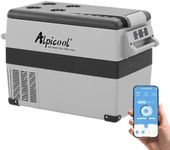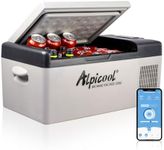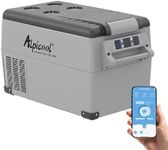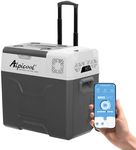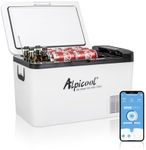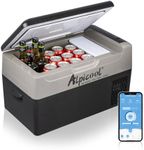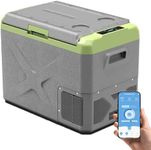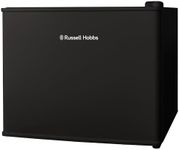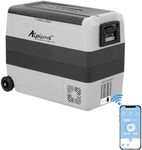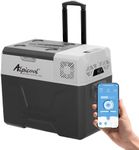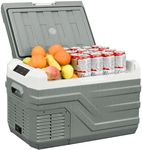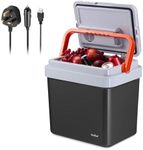Buying Guide for the Best Electric Cool Boxes
Choosing the right electric cool box can make a big difference in your outdoor adventures, road trips, or even daily use. Electric cool boxes are designed to keep your food and drinks cool without the need for ice, making them convenient and efficient. When selecting an electric cool box, it's important to consider several key specifications to ensure you get the best fit for your needs.CapacityCapacity refers to the amount of space inside the cool box, usually measured in liters. This spec is important because it determines how much food and drink you can store. Smaller cool boxes (around 20 liters) are suitable for short trips or personal use, while larger ones (up to 50 liters or more) are better for family outings or longer trips. Consider how much you need to store and choose a capacity that matches your requirements.
Cooling PerformanceCooling performance indicates how well the cool box can maintain a low temperature. This is crucial for keeping your items fresh and safe to consume. Cooling performance is often measured in degrees Celsius below ambient temperature. Basic models might cool to 15-20°C below ambient, while high-performance models can go as low as 30°C or more. If you need to store perishable items, opt for a model with better cooling performance.
Power SourceElectric cool boxes can be powered by different sources, such as 12V car sockets, 230V mains electricity, or even solar panels. This spec is important because it affects where and how you can use the cool box. If you plan to use it primarily in your car, a 12V model is ideal. For home use or camping with access to mains electricity, a 230V model is better. Some models offer dual power options for versatility.
Energy EfficiencyEnergy efficiency refers to how much power the cool box consumes to maintain its temperature. This is important for both environmental reasons and practical use, especially if you're relying on a car battery or solar power. Look for models with energy-saving features or those that are rated for low power consumption. If you're using the cool box for extended periods, a more energy-efficient model will be beneficial.
PortabilityPortability includes factors like weight, size, and ease of transport. This spec is important if you need to move the cool box frequently or carry it over long distances. Lightweight models with handles or wheels are easier to transport. Consider how often you'll be moving the cool box and choose a model that offers the right balance of portability and capacity.
DurabilityDurability refers to how well the cool box can withstand wear and tear. This is important for ensuring the longevity of your investment, especially if you'll be using it in rugged outdoor conditions. Look for models made from sturdy materials like high-quality plastic or metal, and check for features like reinforced corners or waterproof seals. If you plan to use the cool box frequently or in harsh environments, a more durable model is advisable.
Additional FeaturesAdditional features can include things like digital temperature controls, USB charging ports, or built-in cup holders. These features can enhance the usability and convenience of the cool box. Consider which extra features might be useful for your specific needs. For example, digital controls can offer precise temperature management, while USB ports can be handy for charging devices on the go.

